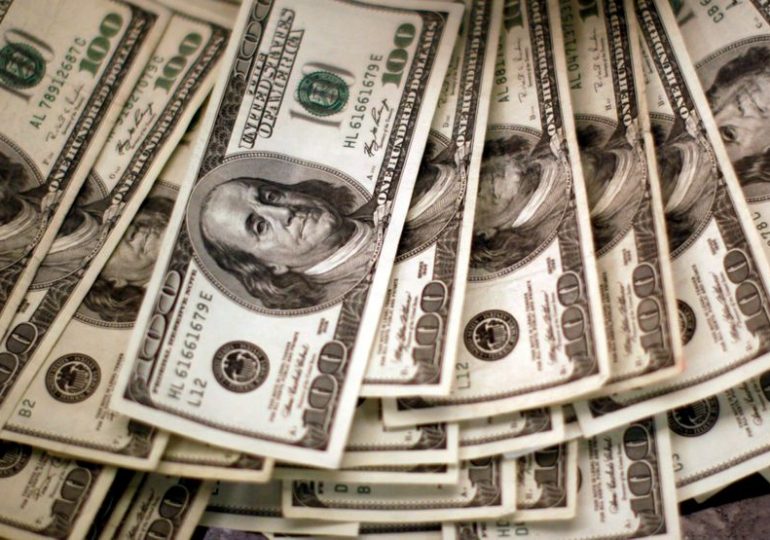 © Reuters. FILE PHOTO: U.S. dollars are counted out by a banker at a bank in Westminster
© Reuters. FILE PHOTO: U.S. dollars are counted out by a banker at a bank in Westminster
By Tom Westbrook
SYDNEY (Reuters) – The dollar fell to a more than two-year low on Monday and is set to log its largest monthly fall since July, as a combination of vaccine optimism and bets on more monetary easing in the United States drives investors out of the world's reserve currency.
Against a basket of currencies, the greenback slipped 0.1% to 91.707, its lowest since April 2018. The risk-sensitive New Zealand dollar hit a two-and-a-half year high and is headed for its best monthly percentage gain in seven years.
"The themes remain familiar: broad dollar weakness amid improving risk appetite," ANZ Bank analysts said in a note.
"This sentiment is likely to continue into December and the (U.S. Federal Reserve) meeting, at which some further action is likely, given the near-term virus risks in the United States."
The euro and Australian dollar each rose slightly to three-month peaks. The Aussie is up more than 5% for the month, the kiwi 6.4% and the euro 2.7%.
Sterling stood at $1.3325, having climbed steadily this month to its highest since September, as investors wagered a Brexit deal would be brokered even as the deadline for talks loomed ever larger.
The dollar index is down some 2.4% for November as promising trial results for three major vaccine candidates excited investors about an eventual end to the coronavirus pandemic. It is nearly 11% below a March peak of 102.990.
Nervousness about a wave of new infections across Europe and the United States, and fresh lockdowns, have provided some support to safe-haven currencies and a slight brake on the dropping dollar.
However, as the drawn-out U.S. election has distracted lawmakers from passing any sort of fiscal spending package, investors have begun to expect that the Fed will step in, probably with more bond buying, when it next meets in December.
Testimony from Fed chair Jerome Powell before Congress on Tuesday and Wednesday, as well as U.S. labour market data this week will be closely watched for clues as to the central bank's thinking and the broad shape of the economy recovery.
The Japanese yen was a fraction firmer at 104.07 per dollar on Monday and has gained a little over half a percent through November as the death toll from the pandemic climbed towards 1.5 million people.
"The dollar is gently drifting to the lows of the year as investors re-allocate portfolios to recovery trades in the rest of the world," ING strategists Chris Turner and Francesco Pesole said in a note to clients.
"While more lockdown restrictions may stand to curb U.S. equity markets, the prospect of the Fed being prepared to add more liquidity should limit any dollar upside. And given that the dollar index has fallen in seven of the last ten Decembers, we do favour gentle dollar downside into the end of the year."
November also marks a sixth consecutive monthly gain for the Chinese yuan, which has soared some 9% from a low in May.
That equals a similar run of monthly gains in 2013, but it is far larger in magnitude as China leads the world out of the coronavirus pandemic and capital inflows push the currency to new heights.
It last sat at 6.5743 per dollar in offshore trade, more or less steady as investors await the November purchasing managers' index due at 0100 GMT.
"These month on month reads are all expected to show expansion across the Chinese economy," said Michael McCarthy, chief strategist at stockbroker CMC Markets in Sydney.
Leave a comment
